Issey Miyake’s HaaT flagship in Kyoto transforms a former sugar store into a pink-hued haven
Renovating a traditional timber building dating back over a century, the Issey Miyake offshoot’s new Kyoto store is a conversation between past and present
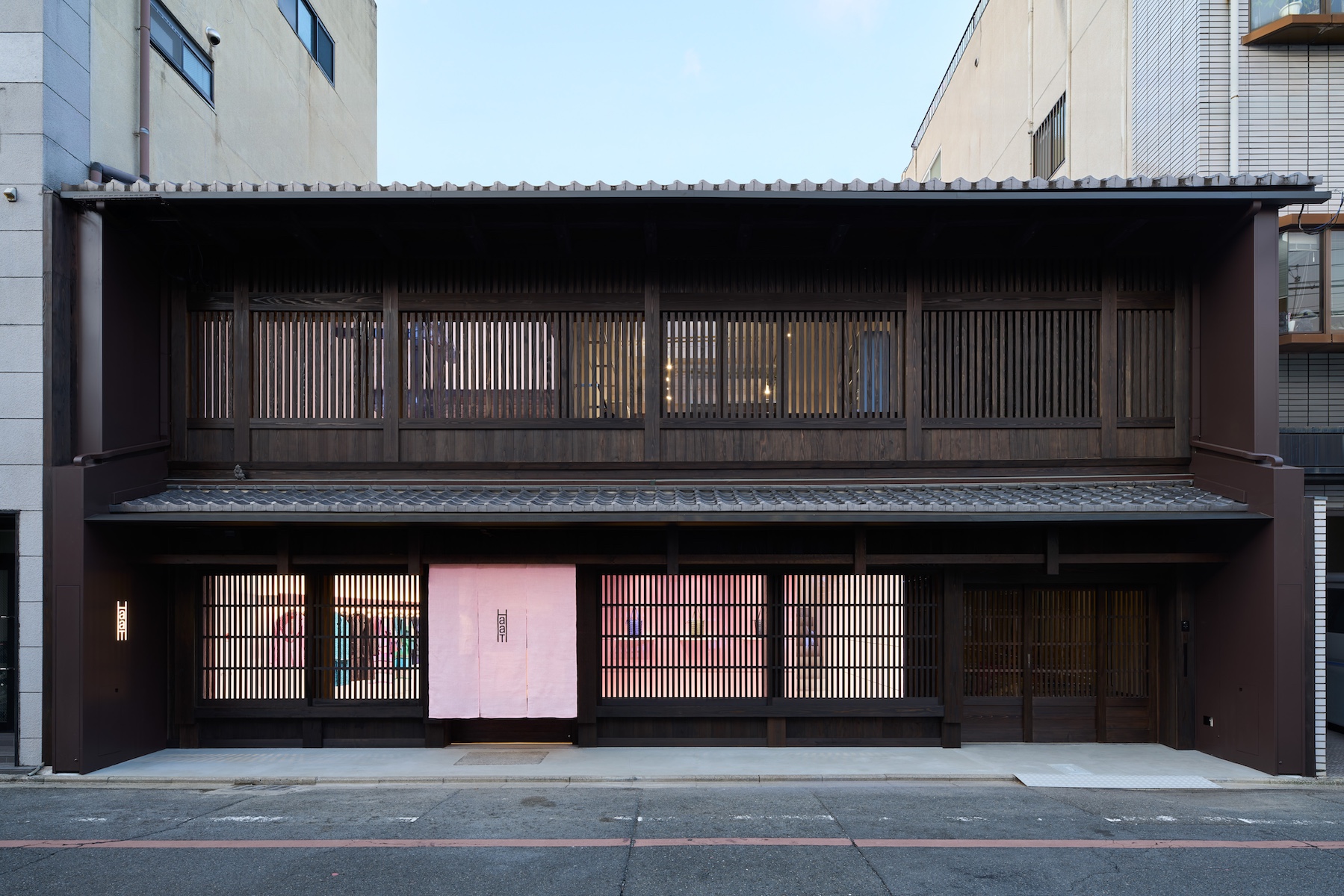
A timber façade with a pink noren curtain. Centuries-old eaves reflected cleanly in mirrors. Minimal aluminium lines in soft cherry blossom tones. And a wall of glass framing a timeless raked stone garden. HaaT, the Issey Miyake brand rooted in textile innovation, has opened its first flagship store in Kyoto, a minimalist renovation of the historic timber structure of a former sugar store dating back 150 years.
Designed by Tokujin Yoshioka, the store seamlessly blends the past with the future, echoing HaaT’s philosophy of creating a dialogue between traditional craftsmanship and contemporary experimentation.
A Kyoto-style latticed wood shopfront, with neat waves of curved rooftop tiles, is balanced with a signature pop of colour: a perfectly pink curtain at the entrance. Sliding the door open and crossing the stone threshold, the interior feels pure and light, with Yoshioka reinventing the building’s story-etched heritage into a minimalist expression of modern lines, tones and textures.
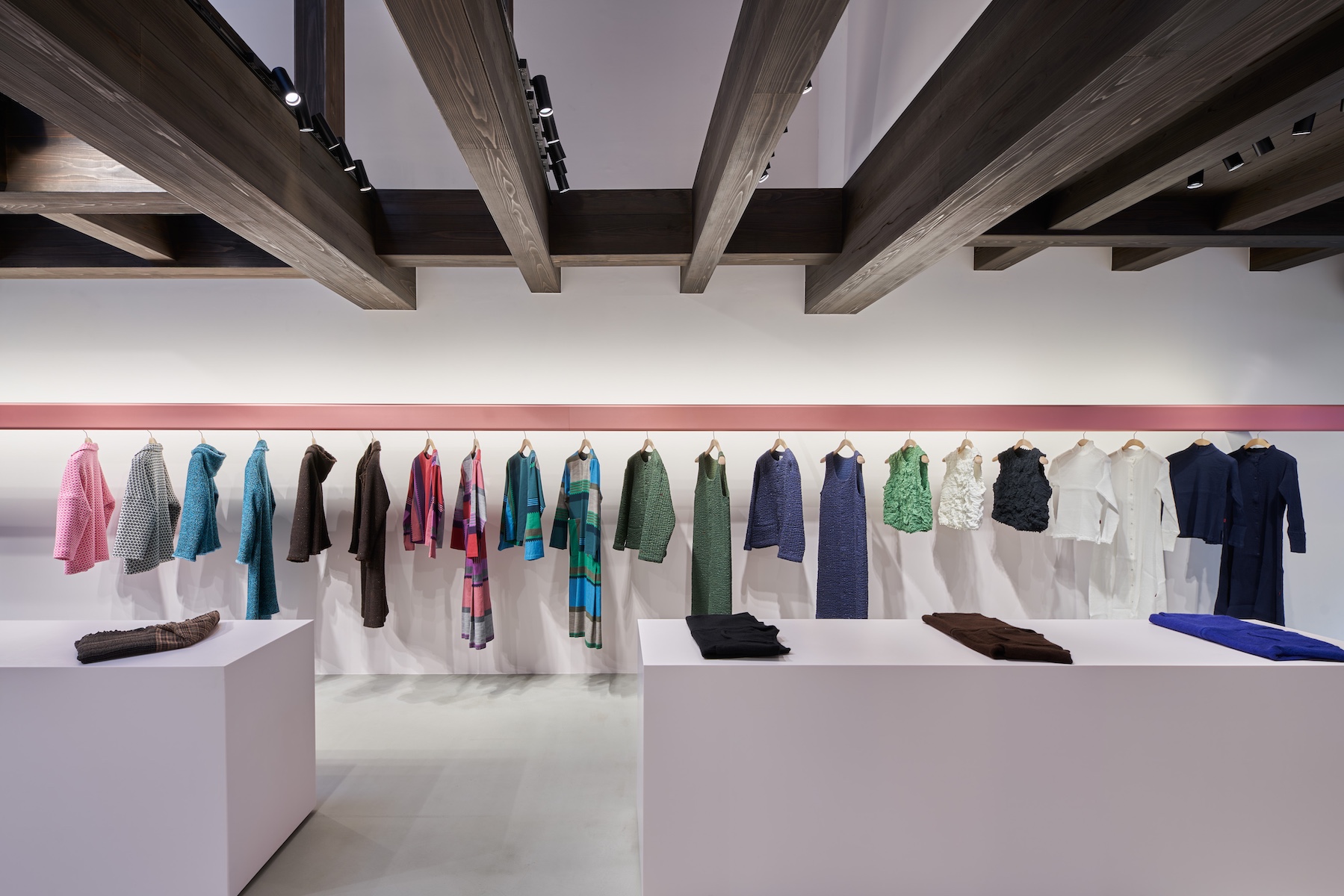
For Makiko Minagawa, the creative director of HaaT, who spent decades working alongside Issey Miyake, Kyoto is a key hub for the brand (as well as her hometown). HaaT works with numerous textile artisans in the region, as well as across Japan and India, to create inventive materials rooted in meticulous crafts heritage.
Speaking at HaaT / Kyoto ahead of its opening, Minagawa tells Wallpaper*: ‘We have been working with Kyoto’s artisans for many years, creating textiles. The number of artisans is decreasing yearly but we want to keep supporting them and developing creations together.’
She adds: ‘Kyoto is a very important place. It has more than a thousand years of history and artisans are always trying to create something new. This spirit has nurtured Kyoto’s handcraft traditions. We really want Kyoto’s artisans to keep thriving – so we want to continue working with them and hope this store will create more opportunities to showcase their work.’
The starting point of the design concept was simple, according to Minagawa: ‘We’ve been working with Yoshioka-san for a long time so I didn’t need to give him specific instructions. I just said that Kyoto’s machiya townhouses are generally all brown with white walls – and I’d like some pink.
Receive our daily digest of inspiration, escapism and design stories from around the world direct to your inbox.

‘From there, the pink concept expanded – soft pinks, almost white pinks, various shades. Yoshioka-san created the Olympic torch from a cherry blossom-dyed aluminium. He said that pink suits Kyoto and the pink idea gradually grew.’
A sense of Kyoto imbues the new HaaT store from the start. The shop, on Aneyakoji Street, has an unusually wide façade measuring 12m. Here, a grey stone boulder – reminiscent of a tea-room entrance – is set smoothly into concrete on the ground beneath a pink curtain floating in the breeze, creating a soft transition between in and out.
Entering the space, there is an immediate sense of lightness not typically associated with often dimly lit Kyoto machiya townhouse architecture. Centre stage is an updated framework made of new timber, with a traditional stone garden at the rear visible through a wall of glass.
The atmosphere is lightened by a soft contemporary material palette. There are smooth swathes of light grey concrete floors, contrasting gently with a pink-white shade painted on walls, as well as cleanly cubed display and counter units.
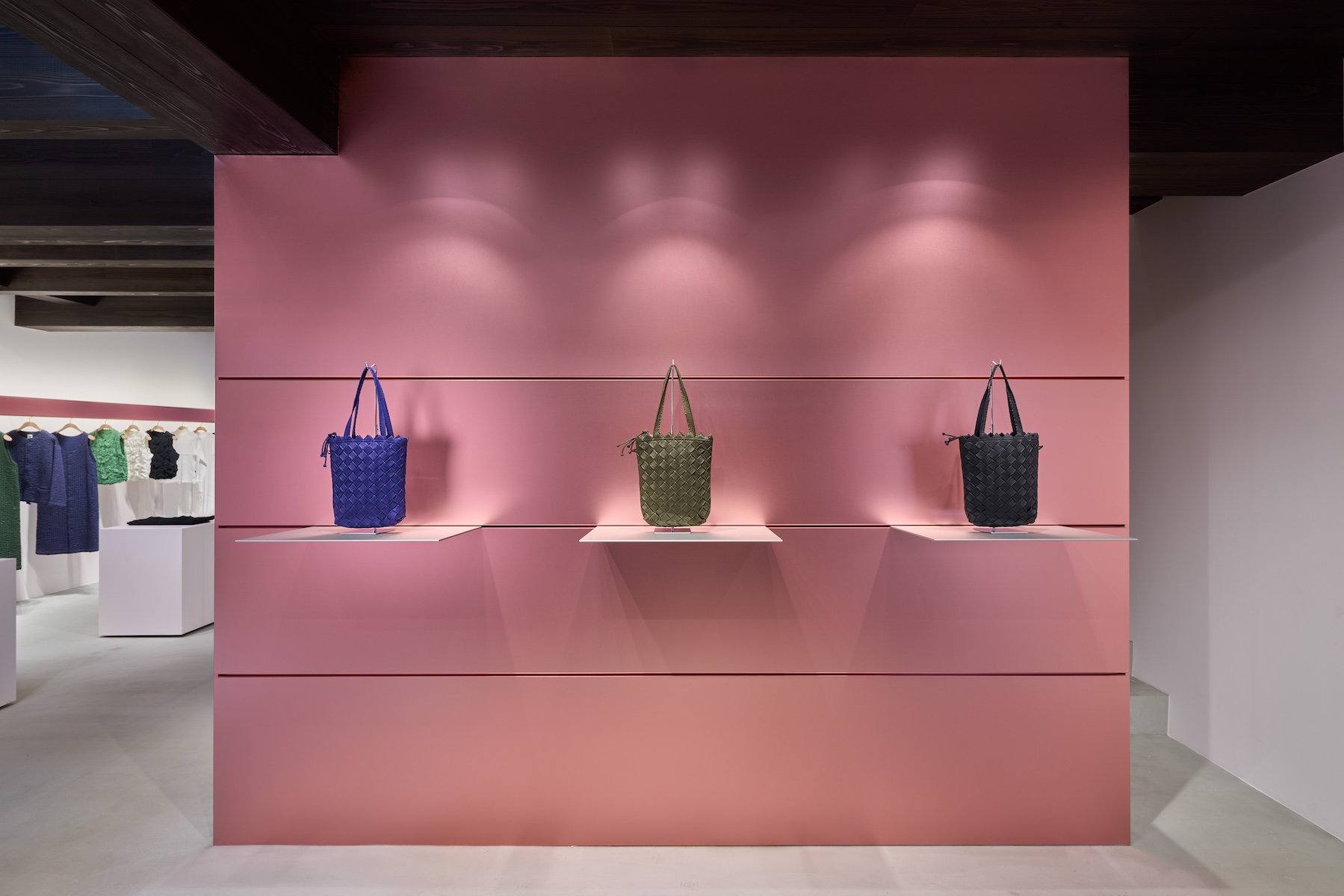
A sense of dynamism is evoked by accents of aluminium, tinged with soft tones of cherry blossom pink – with clothing hanging from a horizontal hanging rail cutting cleanly across one side of the space, creating angular lines of shadows; plus a wall of modular pink panels which are adjustable for displays.
For Yoshioka, the space is shaped by an essential notion of creating something new, rather than replicating the past, as he explains: ‘The design undertaken in this project was not merely an effort to reproduce a traditional townhouse or to renovate its interior, but rather a comprehensive reconfiguration of the building itself.
‘By retaining only the structural framework and roof and redesigning the entire architecture – including the façade – the project sought to reconstruct the structure as a new and original work of architecture.’
The dialogue between past and future is perhaps best captured at the rear of the store. Here – Minagawa’s favourite spot – a glance up reveals the beauty of the original wooden eaves overhanging a large window framing garden views. The timber craftsmanship is subtly highlighted by mirrored surfaces on walls either side, evoking a clean and light infinity effect.
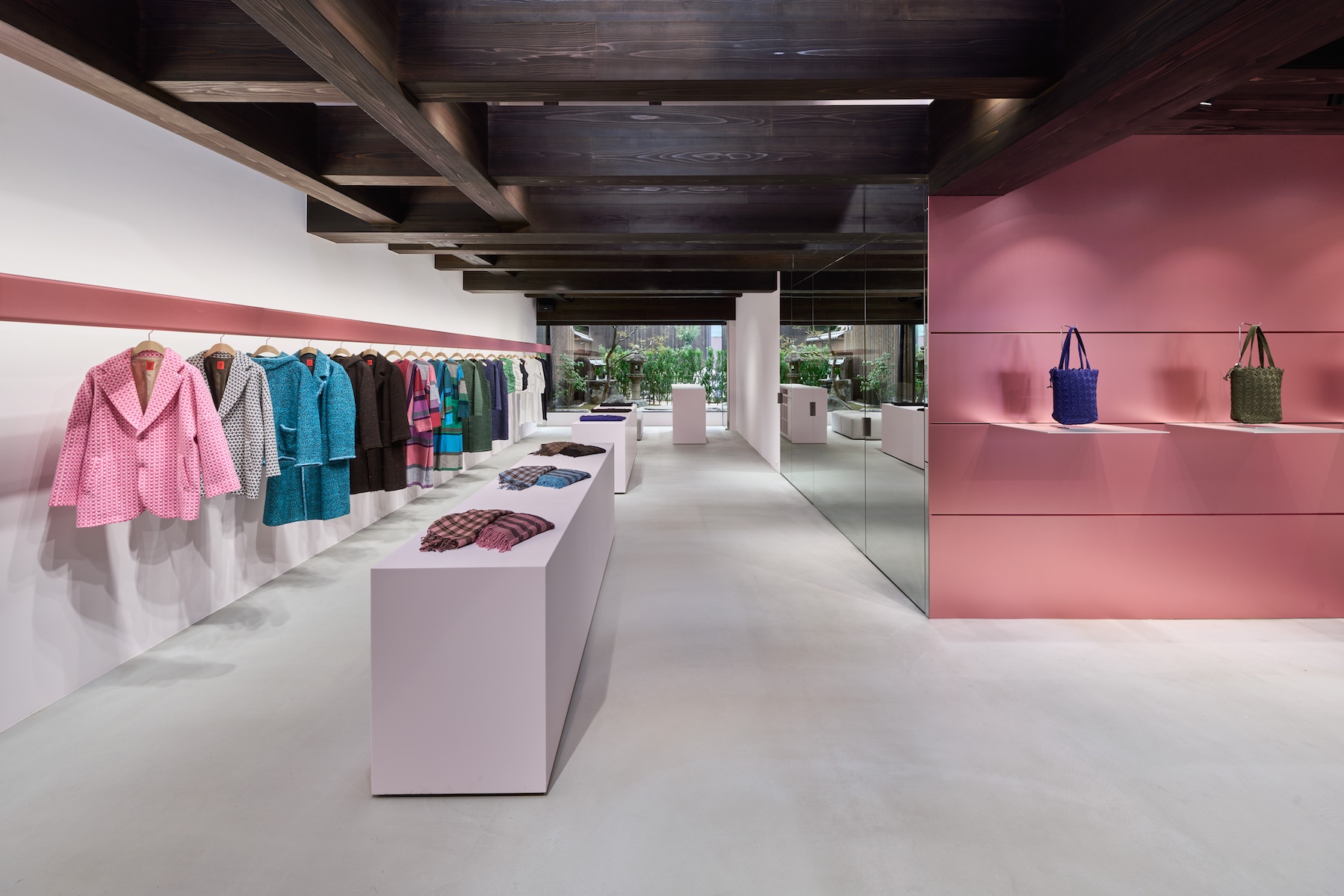
Yoshioka adds: ‘This fusion gives life to a space where the spirit of Makiko Minagawa’s creations breathes quietly. In this harmony between inorganic material and traces of meticulous handwork, a new form emerges to bridge the past and the future.’
Since launching in 2000, HaaT has carved a distinct creative path as a womenswear brand focused first on textiles, fusing heritage craftsmanship with exploratory technology, as brought to life in three lines: Every Month, Every Week and Every Day.
Textile innovations are written into HaaT’s DNA – from lightweight crinkly Kyo Chijimi fabric, which is woven with twisted threads in pure spring water in nearby Shiga, to kabira, an Indian hand-stitching technique creating soft dimensional surfaces reminiscent of Japanese sashiko embroidery.
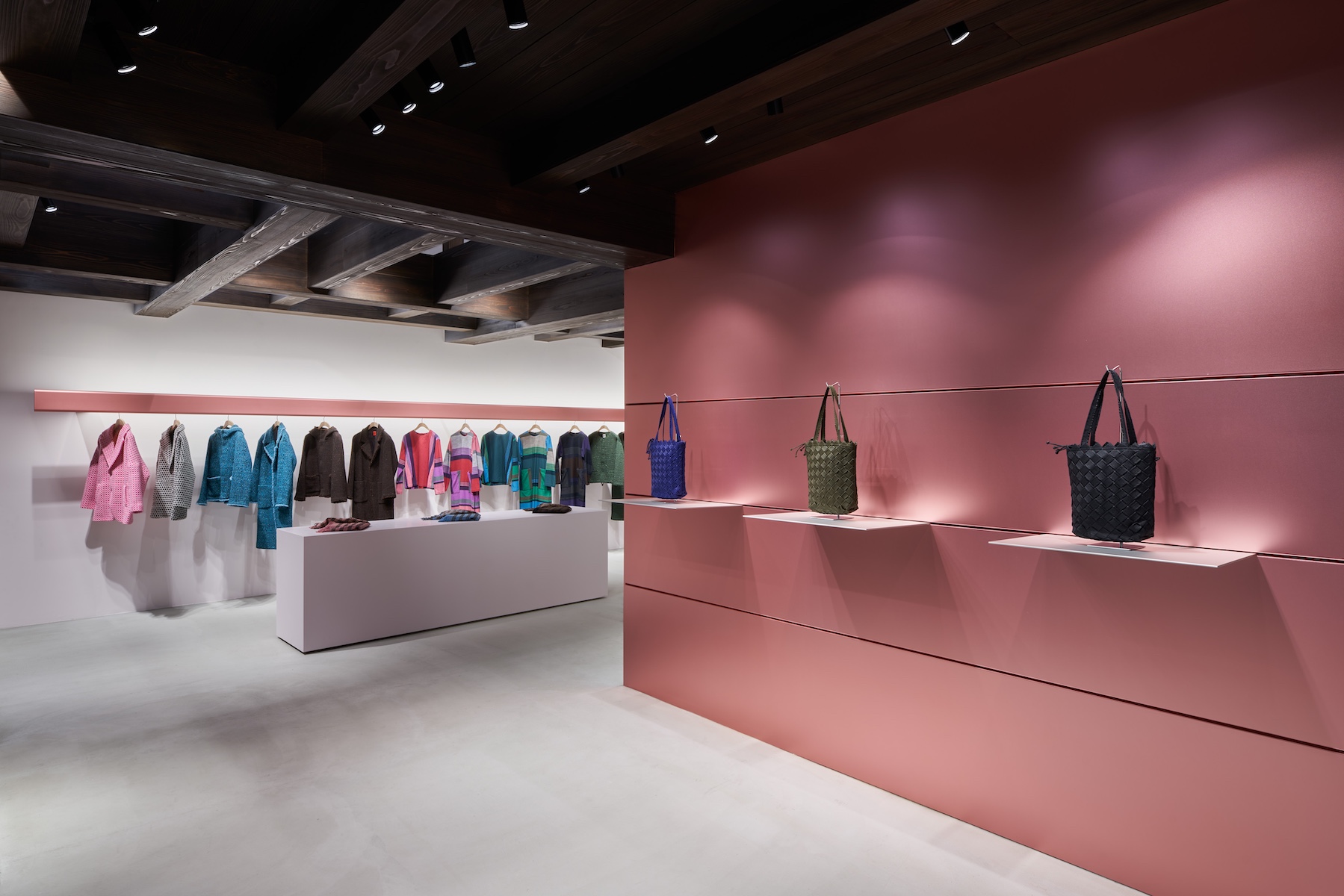
At the new HaaT store, exclusive items include the cloud-like texture of light Kumo Shibori pieces and graphic patterned wool clothing called Roving Kogin, woven in shades of pink or grey and white.
‘My inspirations come from the makers we work with,’ explains Minagawa. ‘Japan and India share many similarities. Both cultures make things that last, repair what is worn and have traditions that evolve. Sustainability is essential because it keeps traditions alive. And for the future, the idea of always creating something new is important.’
HaaT / Kyoto. 569 Kikuyacho, Yanaginobanba Higashi-iru, Aneyakoji-dori, Nakagyo-ku, Kyoto
Danielle Demetriou is a British writer and editor who moved from London to Japan in 2007. She writes about design, architecture and culture (for newspapers, magazines and books) and lives in an old machiya townhouse in Kyoto.
Instagram - @danielleinjapan
-
 Wheels of the weird and wonderful: how the 2025 Japan Mobility Show met its brief
Wheels of the weird and wonderful: how the 2025 Japan Mobility Show met its briefWe bring you our selection of the ten most futuristic concepts and fascinating forthcoming machinery at Tokyo's Japan Mobility Show
-
 Find solace in the forest at this expansive treehouse retreat in Dorset
Find solace in the forest at this expansive treehouse retreat in DorsetFor sale for the first time, a treehouse, Mallinson’s Woodland Retreat, is a tribute to the skill of designer and master craftsman Guy Mallinson
-
 All hail the compact new Renault Twingo E-Tech – the city car is back in style
All hail the compact new Renault Twingo E-Tech – the city car is back in styleRenault continues to pay homage to its heritage by combining it with 21st-century technology. The new Twingo E-Tech is another winner
-
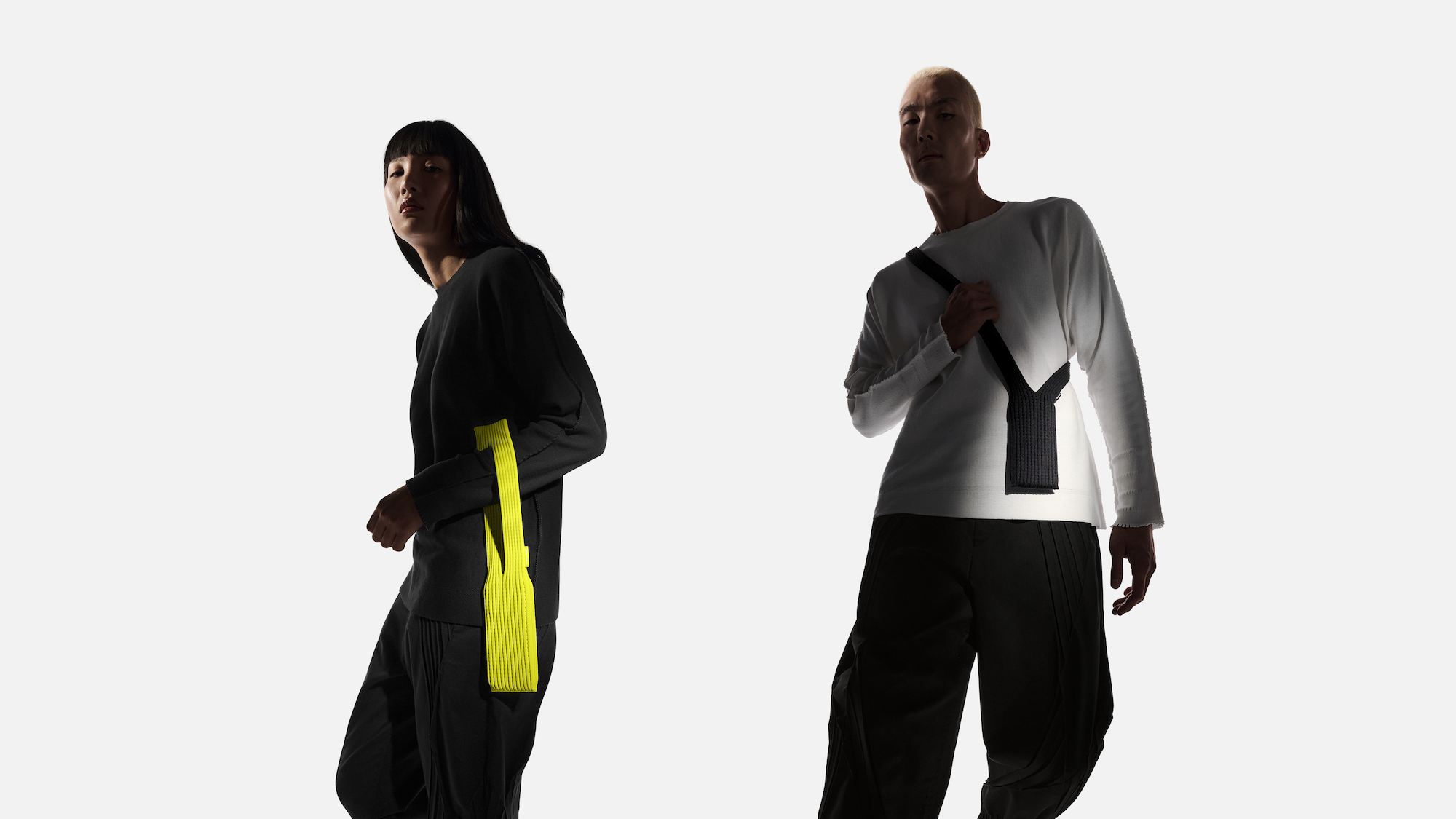 Introducing the iPhone Pocket, a joyful new accessory from Apple and Issey Miyake
Introducing the iPhone Pocket, a joyful new accessory from Apple and Issey MiyakeCarrying your device just got a colourful new twist thanks to the iPhone Pocket, a celebration of the two companies’ shared design DNA
-
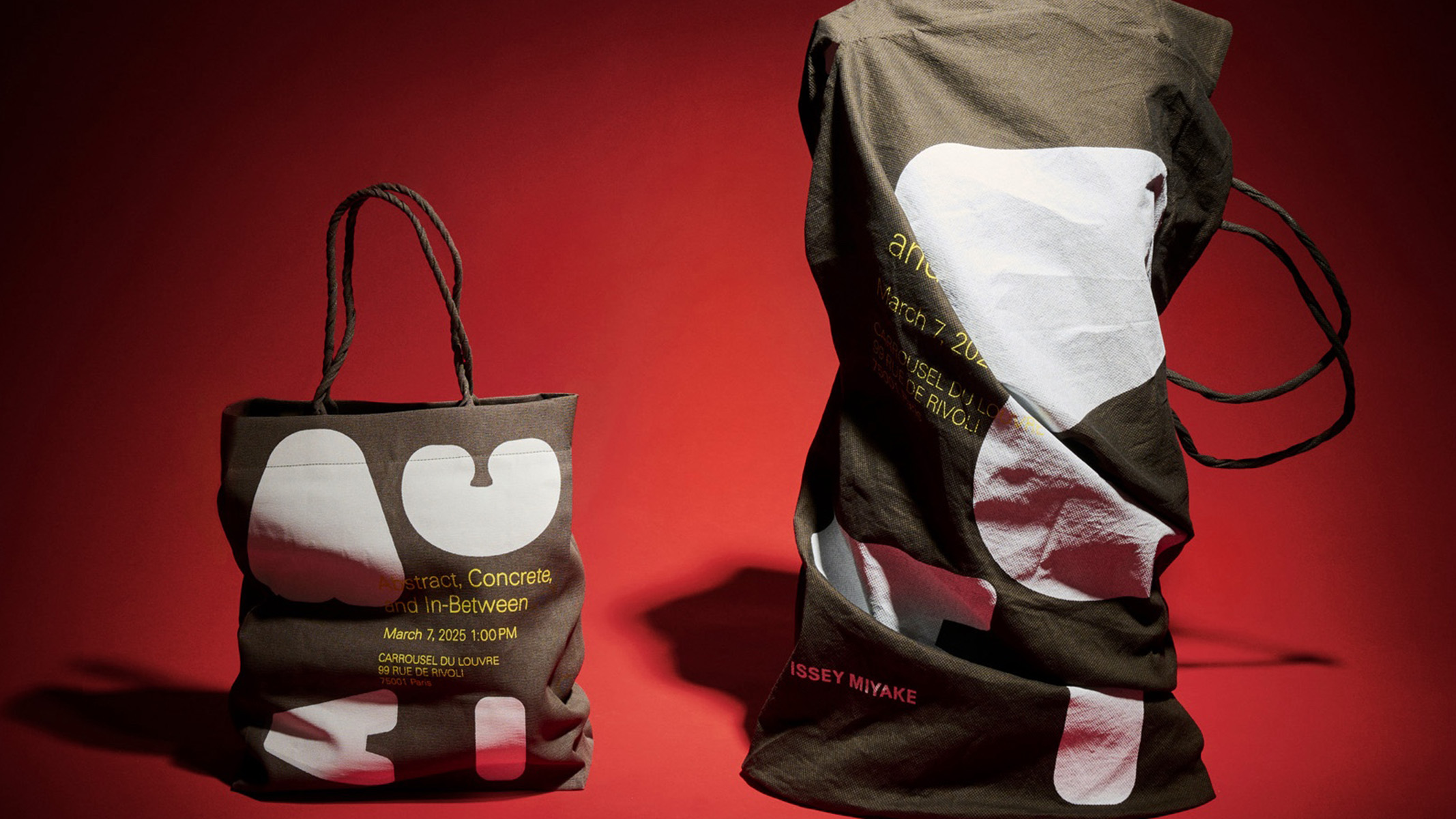 Issey Miyake’s shape-shifting A/W 2025 collection transforms the paper bag into something you can wear
Issey Miyake’s shape-shifting A/W 2025 collection transforms the paper bag into something you can wear‘Can anything be considered a garment, as long as it’s on the body?’ says creative director Satoshi Kondo of the art-infused collection, which sees the everyday reimagined
-
 Chanel’s le19M lands in Tokyo with an exhibition that marries Parisian savoir-faire and Japanese craft
Chanel’s le19M lands in Tokyo with an exhibition that marries Parisian savoir-faire and Japanese craftWallpaper* gets a tour of ‘La Galerie du 19M Tokyo’, a new exhibition that sees craftspeople from Chanel’s network of artisans, le19M, unite with their counterparts in Japan for an intriguing cross-cultural exchange
-
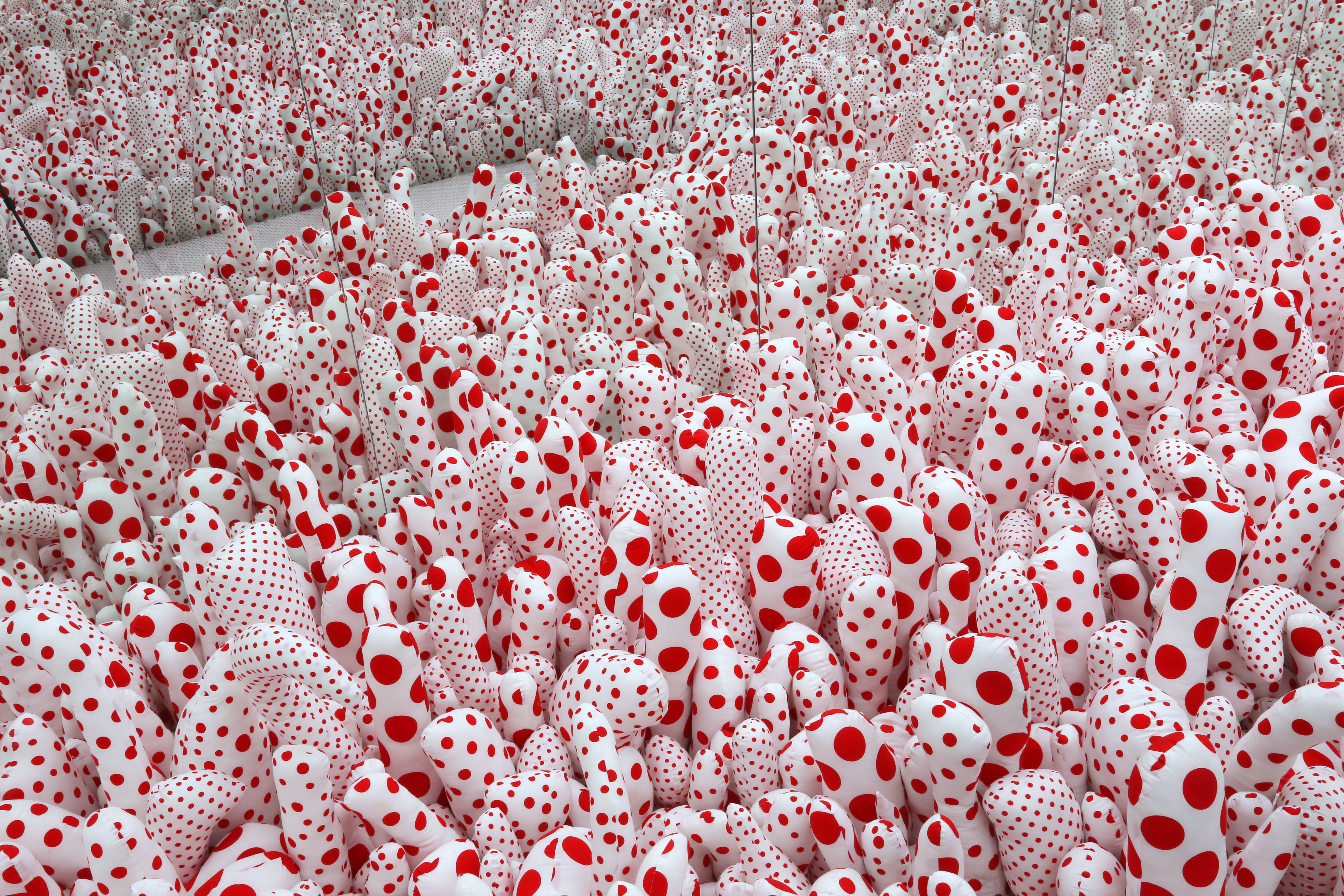 Louis Vuitton’s duo of Osaka exhibitions celebrate the house’s deep-rooted relationship with Japan
Louis Vuitton’s duo of Osaka exhibitions celebrate the house’s deep-rooted relationship with JapanUnfolding in Osaka this summer, ‘Visionary Journeys’ is a transporting trip into the house’s history, while ‘Yayoi Kusama – Infinity’ promises an immersion into the works of the Japanese artist, who is a longstanding Louis Vuitton collaborator
-
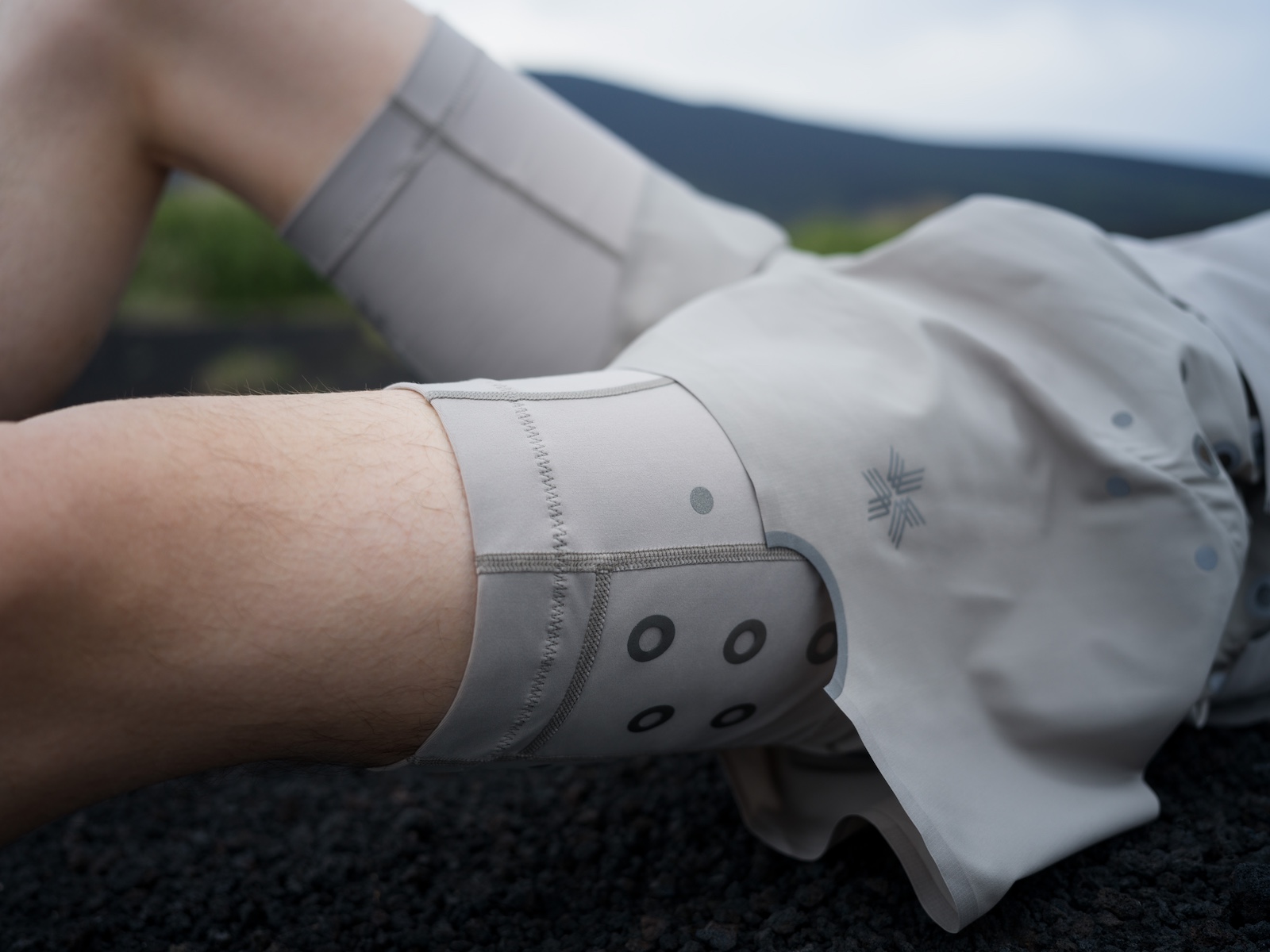 Goldwin 0’s first-ever performance wear is body-mapped to keep you cool
Goldwin 0’s first-ever performance wear is body-mapped to keep you coolThe ‘Performance Capsule’ from Goldwin 0 – an experimental offshoot of Japanese technical wear label Goldwin – draws inspiration from trail running for its meticulously tested sportswear, which uses experimental ventilation techniques to help you work out in the heat
-
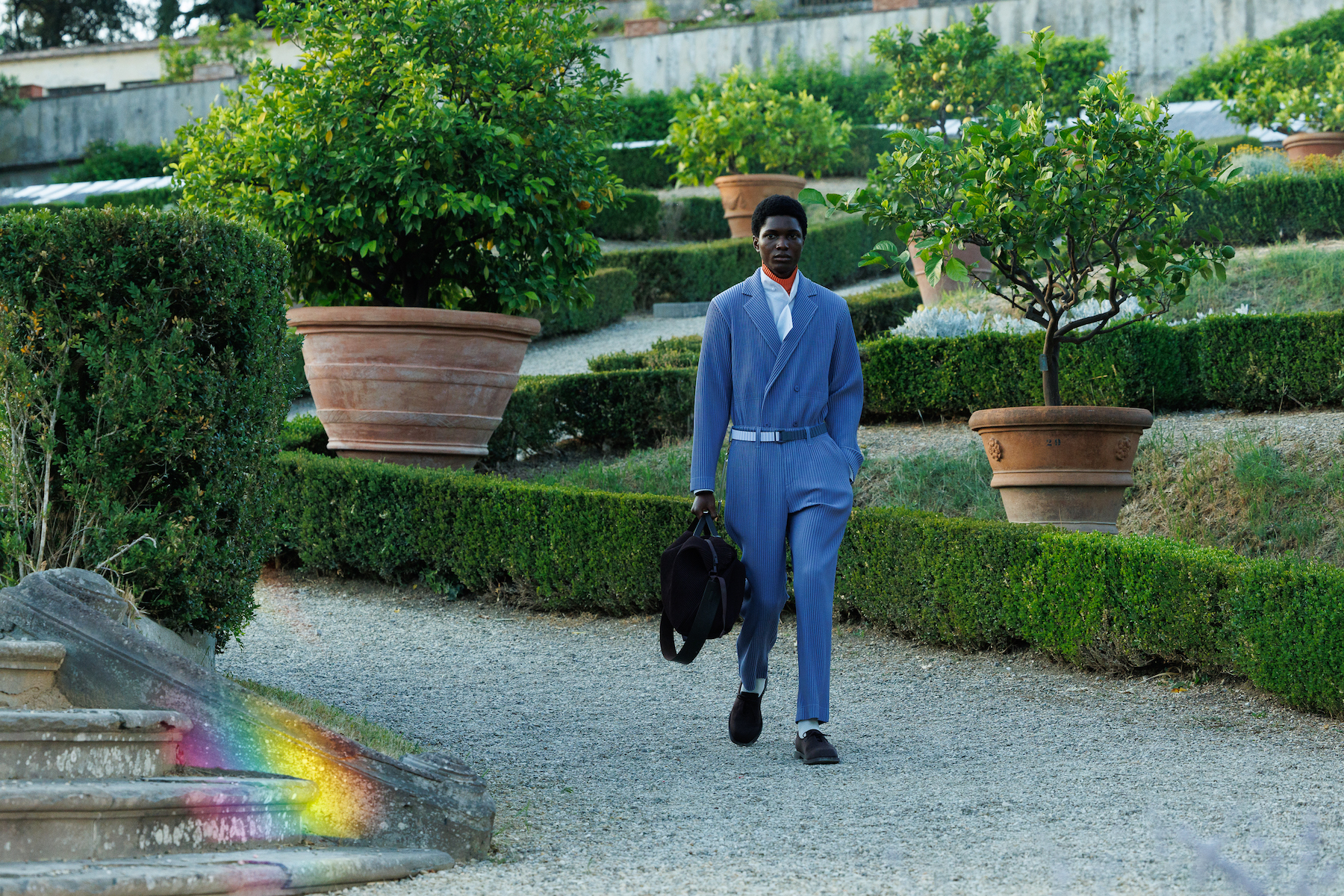 The best of Pitti Uomo 108, from guest stars to gelato
The best of Pitti Uomo 108, from guest stars to gelatoWallpaper* picks the best of the twice-yearly menswear fair, which took place in Florence this week and featured guest shows from Homme Plissé Issey Miyake and rising Italian star Niccolò Pasqualetti, as well as a Tommy Hilfiger social club and Margaret Howell gelato
-
 With an ode to Italy, Homme Plissé Issey Miyake brings its brand of fashion magic to Florence’s Pitti Uomo
With an ode to Italy, Homme Plissé Issey Miyake brings its brand of fashion magic to Florence’s Pitti UomoMarking the start of a new nomadic way of showing for the Japanese label, Homme Plissé Issey Miyake held its S/S 2026 show at Florence’s Villa Medicea della Petraia as part of Pitti Uomo last night (18 June) with a collection inspired by the colours and textures of Italy
-
 What the Wallpaper* editors are looking forward to at Men’s Fashion Week S/S 2026
What the Wallpaper* editors are looking forward to at Men’s Fashion Week S/S 2026As Men’s Fashion Week S/S 2026 begins in Florence, the Wallpaper* style team select the moments they will be looking out for – from Jonathan Anderson’s anticipated Dior debut to outings from Wales Bonner, Kiko Kostadinov and Prada